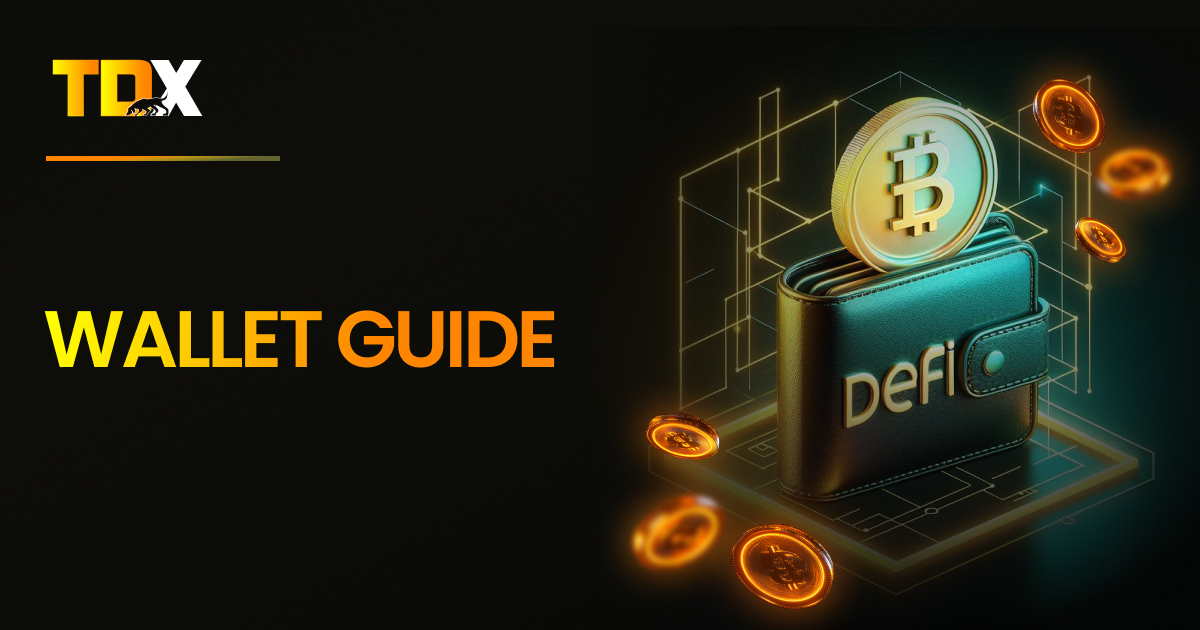 Back to blog
Back to blog


Earn Passive Income with Liquidity Pools!
Instead of allowing your cryptos to sit idle in a wallet, imagine employing them to work, earning rewards while also contributing to the backbone of DeFi (Decentralized Finance).
Liquidity pools make this possible by allowing users to deposit their crypto assets into a shared reserve that powers trading, lending, and borrowing without the need for traditional financial intermediaries.
These pools are the foundation of DeFi Protocols such as Curve, PancakeSwap, and Uniswap. This will ensure that trades happen quickly, even when no direct seller or buyer is available.
In this article, we’ll check out what liquidity pools are, how they produce income, and how investors can participate in them to increase their earnings.
Let’s drive in 🚀
What are Liquidity Pools
Liquidity pools act as the foundation of DeFi (decentralized finance), allowing trading without the need for any traditional seller or buyer.
When investors deposit their cryptos in a liquidity pool, they become Liquidity Providers (LPs). In return, they primarily earn rewards from the platform’s trading fees. Each time a trader swaps tokens in the pool, a small fee is charged to them. This fee is then distributed among liquidity providers based on their share of the total pool.
The more liquidity a user provides, the larger their portion of the collected fees.
Liquidity pools act via Automated Market Makers (AMMs) to ensure every trade automatically happens using smart contracts. Unlike traditional trading mechanisms that rely on sellers and buyers placing orders, AMMs allow traders to trade using the liquidity in a pool.
This system gets rid of delays and makes sure that the asset can be bought or sold anytime as long as sufficient liquidity is there.
How Liquidity Pools Generate Passive Income?
Liquidity pools consist of 2 different types of tokens, creating a trading pair that enables swaps between assets. These pairs, including USDC/ETH, BNB/USDT, or DAI/USDT, allow users to trade one token for another without having a direct partner.
Instead of traditional order books, these pools rely on automated market makers (AMMs). These AMMs adjust token prices based on the pool’s demand and supply ratio.
Liquidity providers receive a share of trading fees, which is the most consistent and widely used method across all DeFi platforms. Whenever a trade takes place in a liquidity pool, the platform charges a transaction fee to the trader. This fee typically ranges between 0.05% to 0.3%, depending on the pool and the platform.
For example,
- Uniswap charges 0.3% per trade
- PancakeSwap charges 0.001% to 1% per trade
Since these pools work without an intermediary, the use of a smart contract makes sure a transparent and fair distribution of trading fees takes place. The trading fees are collected and then equally distributed among liquidity providers based on their share in the pool.
This means that the greater the amount of liquidity a user provides to the liquidity pool, the greater their portion of the trading fees they’ll receive. For your reference, if a liquidity provider contributes 10% of the total liquidity in a USDC/ETH pool, they are likely to get 10% of the total trading fees that are being charged from trades taking place in the pool.
For example, let’s say you provide liquidity to a USDC/ETH pool on Uniswap, which charges a 0.3% fee on each trade. You invest 10 Ethereum along with the same amount of USDC. If the total liquidity in the pool present is 100 Ethereum along with its pair USDC, you own 10% of the liquidity pool.
Now, suppose that traders swap the $1,000,000 value of USDC and ETH in a day. Since Uniswap charges a 0.3% fee on the trades, the entire trading fees for that specific day add up to $3,000. As a liquidity provider who has a 10% share in the liquidity pool, your part of the fees would be $300.
This means that by providing liquidity, you may earn $300 in passive income from trading fees in a day without having to do anything. This income is then added to your liquidity balance, and you can withdraw it anytime, along with your initial investment.
Why Liquidity Pools are a Great Earning Opportunity
Liquidity pools have come up as a great way for cryptocurrency holders to produce passive income while also contributing to the DeFi ecosystem. Here are some core reasons why investors consider these pools as a great earning opportunity:
High APY Rewards
One of the main attractions of liquidity pools is the potential to earn high annual percentage yields (APYs), often surpassing returns from other investment options. These rewards come mainly from trading fees. But several DeFi platforms offer extra rewards as well. This eventually increases the income potential of the liquidity providers.
APYs in liquidity pools change based on some factors, including overall market conditions, liquidity demand, and trading volume. Liquidity pools with higher trading activities generate greater fee rewards. Hence, it results in higher earning opportunities for liquidity providers.
The following table features the present APY rates for different liquidity pools and showcases the liquidity providers’ earning potential.
| Liquidity Pools | Return (As of 27-03-2025) |
| WETH/USDC (GMX) | 19.18%(APY) |
| WETH-USDT(PancakeSwap AMM V3) | 12.02%(APY) |
| CVXCRV (Convex Finance) | 12.45%(APY) |
Passive Income Without Active Trading
Liquidity pools provide an effortless way to earn passive income without requiring constant market monitoring or active trading. Once a user deposits his cryptos into a pool, he automatically starts to earn via trading fees. The smart contract manages the pool and makes sure that liquidity providers get their fair share of the trading fees on the basis of their contribution.
Unlike active trading, where users must analyze price trends and execute trades, liquidity provision allows earnings to accumulate continuously and seamlessly. Additionally, some platforms, such as Uniswap and PancakeSwap, offer extra token rewards, further increasing potential returns.
Flexibility and Accessibility
Liquidity pools offer flexibility and accessibility, allowing users to participate without complex procedures or long-term commitments. Unlike traditional finance with strict requirements, liquidity providers may deposit and withdraw their crypto assets at any given time. As a result, this provides them with complete control over their funds.
The majority of platforms work on blockchain networks, meaning anyone with a crypto wallet may provide liquidity. Also, they don’t need any approval or to meet eligibility criteria. In addition to this, smart contracts manage all transactions, making sure of an automated and seamless process.
Since these pools operate on decentralized networks, they are accessible 24/7, allowing users to interact with them at any time, regardless of market hours or location.
Extra Rewards
Many DeFi platforms, such as Curve, PancakeSwap, and Uniswap, provide extra rewards to liquidity providers in the form of governance tokens, including CRV, CAKE, and UNI. These tokens serve 2 main purposes: you can sell them for extra earnings or use them to participate in platform governance. This allows holders to vote on important decisions such as fee structures, liquidity incentives, and protocol upgrades.
For instance, if you invest funds in a liquidity pool on Uniswap, you may receive UNI tokens along with your fair share of the total trading fees. You can either hold these tokens to influence governance proposals or sell them for immediate profit.
Maximizing Liquidity Pool Income
Earning from liquidity pools is not just about depositing assets and waiting for rewards, it needed strategic planning to maximize your returns and minimize the risks .
By carefully selecting the Liquidity pools, diversifying investments, reinvesting rewards, and actively monitoring performance, liquidity providers can optimize risks like impermanent loss and their earnings
Choosing the Right Pools
Choosing the right liquidity pool is important to maximizing income. Pools with stablecoins, like USDC/DAI or USDT/BUSD, offer lower risks due to minimal price change, making them ideal for conservative investors. On the other side, pools involving volatile cryptocurrencies, such as ETH/USDT or BNB/CAKE, often provide higher returns but come with greater risks
To find the most suitable pools, you can use tools like DeFiLlama, DEX Screener, and APY.Vision can help analyze real-time data, track yields, and assess risk factors. These platforms provide insights into trading volumes, liquidity trends, and historical returns, allowing users to make informed investment decisions.
For Example: DeFiLlama, tracks liquidity pools across multiple protocols and chains. For example, as of March 2025, DeFiLlama lists APYs for various pools, including STETH (Lido) with 2.75% APY and JITOSOL (Jito) offering 7.61% APY, helping users compare opportunities based on real-time data.
Avoiding Impermanent Loss
When providing liquidity to a decentralized exchange (DEX), users deposit two tokens into a pool, allowing others to trade between them. In return, liquidity providers earn a share of trading fees.
However, token prices constantly change, and the value of deposited assets may change over time, because of this change, It may leads to impermanent loss, a situation where the total value of a user’s assets in the liquidity pool is lower than if they had simply held the tokens in a wallet.
Impermanent loss happens because liquidity pools automatically adjust token balances based on supply and demand. When one token in the pair increases or decreases in price, the pool rebalances the crypto assets, which can sometimes lead to low returns when withdrawing funds.
Example: suppose you deposit 1 ETH worth $2,000 into a liquidity pool. Over time, due to market fluctuations, the price of ETH drops. When you decide to withdraw your funds, the total value of your assets has decreased to $1,800 instead of the original $2,000 This difference of $200 is called an impermanent loss, as the pool’s automated balancing adjusted your token holdings in response to price changes.
To minimize this risk, liquidity providers should choose to the stablecoin pairs, like USDC/DAI or USDT/BUSD, as they experience minimal price change.
Keep an eye on market trends is also needed if a particular asset is experiencing extreme price change, it may be wise to reallocate liquidity to more stable pools.
Reinvesting Rewards
One of the most effective ways to grow earnings in liquidity pools is by compounding rewards. Instead of withdrawing their earned fee, liquidity providers can reinvest it which increases their overall profit and their future earnings.
Platforms like Uniswap (V3), PancakeSwap, and Curve Finance offer option for reinvestment, either manually or through auto-compounding strategies, helping users maximize their returns .
Reinvesting rewards can be profitable as it increases a provider’s share in the liquidity pool, which means earning a larger portion of future trading fees. As more liquidity is added, the compounding effect starts to take place, leading to high growth in earnings rather than just linear returns.
This process is the same as earning interest on interest in traditional finance, where returns keep collecting and growing over time.
For example, if a liquidity provider deposits funds into a BNB/USDT pool and earns $50 in trading fees in one week, they have two options withdraw the $50 as profit or reinvest it back into the pool If they reinvest, their total liquidity share increases, meaning they will earn a larger portion of future trading fees.
Some platforms, like Beefy Finance and Autofarm, offer auto-compounding strategies that automatically reinvest rewards at optimal intervals, maximizing returns without manual effort.
Monitoring and Adjusting Investments
Liquidity pools are constantly changing, with APYs, trading volumes, and rewards changing frequently. Regularly reviewing pool performance ensures that liquidity providers can shift their funds to pools offering better returns or lower risks. For example, if a pool’s APY drops significantly or impermanent loss becomes too high, it may be beneficial to reallocate liquidity to a more stable or profitable option.
Challenges in Liquidity Pools Income
While liquidity pools provide high-earning opportunities, they also come with several challenges that liquidity providers must carefully consider. It depends on multiple factors, like market volatility, impermanent loss, fluctuating trading volumes, manual management requirements, smart contract risks, and unpredictable rewards.
Manual Efforts in Managing Liquidity
Providing liquidity is not a passive investment, it needs active strategic management and monitoring. Liquidity providers must continuously track market trends, assess trading volume, and evaluate the overall performance of their chosen liquidity pool. Since APYs and trading fees constantly change based on factors like market activity, failing to monitor these factors can result in low returns.
Fluctuating APYs
Unlike fixed-income investments, the Annual Percentage Yield (APY) in liquidity pools fluctuates. It depends on trading volume, pool activity, and competition among liquidity providers. If a pool sees a sudden increase in liquidity, the rewards get distributed among more participants, reducing individual earnings. Similarly, if trading volume decreases, liquidity providers earn lower returns. This volatility makes it difficult to predict steady profits.
Risk of Impermanent Loss
Impermanent loss happens when the price of one token in a liquidity pool changes significantly compared to when it was deposited. If the price increases or decreases sharply, the total value of the liquidity provider’s funds may be lower when they withdraw than what they initially invested. This is because the automated market maker (AMM) continuously adjusts the token ratio in the pool to maintain a balance
The Bottom Line
Liquidity pools let users earn passive income by adding crypto assets to a pool and they receive a share of the trading fee that is generated from token swaps
The more liquidity a user provides the higher the trading volume and higher the potential earnings. While risks like impermanent loss exist, selecting an active and stable pool can help to maximize rewards.
Overall, liquidity pools are a fundamental part of DeFi, making it easy for users to earn without active trading.
40,000 readers 🚀 are getting insights with our media
 Read on Medium
Read on Medium 

Article
“Is Ethereum dead?” This is a trending argument that is appearing in various crypto communities and media. Which is not…


Guide
Welcome to the beginner’s guide on Trust Wallet, MetaMask, and Exodus—three most common cryptocurrency wallets for managing your crypto assets….


Article
When Venezuela’s inflation hit 189.8% in 2023 [Central Bank of Venezuela, 2023], Maria’s life savings of 200 million bolivars (enough…


Article
For generations, Indians have trusted one investment: fixed deposits (FDs). If you walk into any Indian household, chances are someone…


